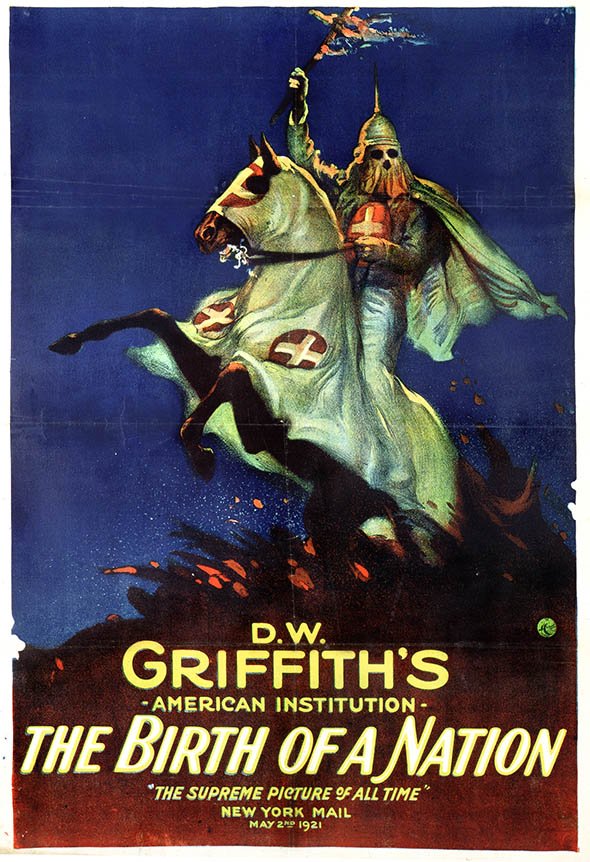The Birth Of A Nation – Unmaking Of American History!

Claim To Fame
The film is based on Thomas Dixon’s racist novel ‘The Clansman,’ which mindlessly ridicules Afro-Americans. Widely quoted as ‘the meanest vilification of the Negro race,’ this silent era film with its explicitly racist theme emerged as the most controversial film of all time. Recognized throughout the world as the single most important individual in the development of film as an art, D.W. Griffith is the man who made this movie. This 12-reel film was the first motion picture to run over 100 minutes at a time when Hollywood was churning out countless one-reel and two-reel films.
“As slavery is the great sin of America, so "The Birth of a Nation" is Griffith's sin, for which he tried to atone all the rest of his life.”
- Roger Ebert
Film Critic
This particular Griffith’s film received strongly worded condemnation from the renowned film critics across the globe.
“The Birth of a Nation is "equal to Brady's photographs, Lincoln's speeches, and Whitman's war poems".
- James Agee
Film Critic
At the same time, the same filmmaker was hailed for his artistic and technical wizardry in storytelling.
The popular actress of silent era, Lillian Gish called him "the father of film" and the world’s most admired comedian Charlie Chaplin called him "the teacher of us all."
Griffith’s films became part of history in the making—unleashing the power of movies as a catalyst for social change.
Story
It’s far-reaching story covers the years-long events that befall two American families before, during and after the civil war.
The film is broken down into three parts - the first, pre civil war, tells of the life of two separate families, one in the north and one in the south.
The Camerons headed by Ben Cameron (Henry B. Walthall) and Stonemans, headed by politician Austin Stoneman (Ralph Lewis). They have been friends for years, but find themselves on opposite sides of the battle lines when the war comes.
The second part deals with the civil war that takes a personal toll on both families, only to be followed by the equally destructive Reconstruction period. Griffith links the consequences of the war with the formation of Ku Klux Klan (a murderous pro-white racist gang) and Lincoln's assassination. The controversial last part deals with the black majority in the south, focusing their anti-white activities. In the harrowing final moments, it shows how the African-Americans are lustful rapists. It also deals with the uprising of the Ku Klux Klan.
Credits & Trivia
Due to its popularity, it was widely believed that some actors might have exaggerated claims of having worked in this film in order to bolster their resume!
Joseph Henabery, who was one of the prominent assistant directors, played 13 roles in the film in addition to his main role as Abraham Lincoln!
Reportedly, Director D.W. Griffith visualized the whole film in his mind and did not write out a script or keep written notes!
Rated #44th by the American Film Institute in its 100 Greatest Films List. Because of its racist overtones, the movie instigated violence across America and it was banned in several major cities, such as Los Angeles and Chicago. To answer his critics, director Griffith made a sequel, the magnificent four-story epic about human intolerance titled “Intolerance” (1916).
Memorable Scenes & Analysis
The re-creation of Lincoln’s assassination is so realistic that it feels like it was actually recorded on that fateful April evening in 1865.
• Innovative Ideas adopted by D.W. Griifith
• The use of ornate title cards
• Special use of subtitles graphically verbalizing imagery
• The introduction of night photography (using magnesium flares)
• The use of outdoor natural landscapes as backgrounds
• The definitive usage of the still-shot
• Elaborate costuming to achieve historical authenticity and accuracy
• Many scenes innovatively filmed from many different and multiple angles
• Moving, traveling or "panning" camera tracking shots
• Splendidly-staged battle scenes with hundreds of extras (made to appear as thousands)
• Extensive cross-cutting between two scenes to create a montage-effect and generate excitement and suspense (e.g., the scene of the gathering of the Klan)
• Expert story telling, with the cumulative building of the film to a dramatic climax.
It contains many new cinematic innovations and refinements, technical effects and artistic advancements, including a colour sequence at the end.
Agreeably, this movie is one of the recommended case studies for the film students and movie buffs across the world.
"Classic or not, 'Birth of a Nation' has long been one of the embarrassments of film scholarship. It can't be ignored...and yet it was regarded as outrageously racist."
- Andrew Sarris
Film Critic
Despite its historical inaccuracies, this groundbreaking drama is a key film in the evolution of cinema as a medium.
By
Srini
This post has been ranked within the top 25 most undervalued posts in the first half of Mar 21. We estimate that this post is undervalued by $8.15 as compared to a scenario in which every voter had an equal say.
See the full rankings and details in The Daily Tribune: Mar 21 - Part I. You can also read about some of our methodology, data analysis and technical details in our initial post.
If you are the author and would prefer not to receive these comments, simply reply "Stop" to this comment.